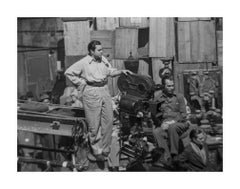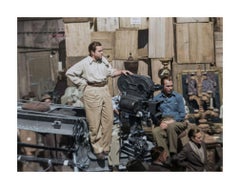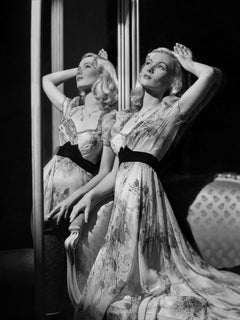1940s Black and White Photography
Contemporary 1940s Black and White Photography
Archival Ink, Archival Paper, Archival Pigment
Contemporary 1940s Black and White Photography
Archival Ink, Archival Paper, Digital, Archival Pigment
Contemporary 1940s Black and White Photography
Archival Ink, Archival Paper, Digital, Archival Pigment
Contemporary 1940s Black and White Photography
Archival Ink, Archival Paper, Digital, Archival Pigment
Contemporary 1940s Black and White Photography
Archival Ink, Archival Paper, Digital, Archival Pigment
Contemporary 1940s Black and White Photography
Archival Ink, Archival Paper, Archival Pigment
Contemporary 1940s Black and White Photography
Archival Ink, Archival Paper, Digital, Archival Pigment
Contemporary 1940s Black and White Photography
Archival Paper, Archival Pigment, Digital, Archival Ink
Contemporary 1940s Black and White Photography
Archival Ink, Archival Paper, Digital, Archival Pigment
Contemporary 1940s Black and White Photography
Archival Ink, Archival Paper, Digital, Archival Pigment
Contemporary 1940s Black and White Photography
Archival Ink, Archival Paper, Digital, Archival Pigment
Contemporary 1940s Black and White Photography
Archival Ink, Archival Paper, Digital, Archival Pigment
Contemporary 1940s Black and White Photography
Archival Ink, Archival Paper, Digital, Archival Pigment
1940s Black and White Photography
Silver Gelatin
Contemporary 1940s Black and White Photography
Silver Gelatin, Photographic Paper
Contemporary 1940s Black and White Photography
Archival Ink, Archival Paper, Digital, Archival Pigment
Contemporary 1940s Black and White Photography
Archival Ink, Archival Paper, Digital, Archival Pigment
Contemporary 1940s Black and White Photography
Archival Ink, Archival Paper, Digital, Archival Pigment
Contemporary 1940s Black and White Photography
Archival Ink, Archival Paper, Digital, Archival Pigment
Contemporary 1940s Black and White Photography
Archival Ink, Archival Paper, Digital, Archival Pigment
Contemporary 1940s Black and White Photography
Archival Ink, Archival Paper, Digital, Archival Pigment
Contemporary 1940s Black and White Photography
Archival Ink, Archival Paper, Digital, Archival Pigment
Contemporary 1940s Black and White Photography
Archival Ink, Archival Paper, Digital, Archival Pigment
1940s Black and White Photography
Silver Gelatin
Modern 1940s Black and White Photography
Lithograph
Modern 1940s Black and White Photography
Lithograph
Modern 1940s Black and White Photography
Lithograph
Modern 1940s Black and White Photography
Lithograph
Modern 1940s Black and White Photography
Lithograph
Modern 1940s Black and White Photography
Lithograph
Modern 1940s Black and White Photography
Lithograph
Modern 1940s Black and White Photography
Lithograph
Modern 1940s Black and White Photography
Lithograph
Modern 1940s Black and White Photography
Lithograph
Modern 1940s Black and White Photography
Lithograph
Modern 1940s Black and White Photography
Lithograph
Modern 1940s Black and White Photography
Lithograph
Modern 1940s Black and White Photography
Lithograph
Modern 1940s Black and White Photography
Lithograph
Modern 1940s Black and White Photography
Lithograph
Modern 1940s Black and White Photography
Lithograph
Modern 1940s Black and White Photography
Lithograph
Modern 1940s Black and White Photography
Photographic Paper
Art Deco 1940s Black and White Photography
Silver Gelatin
Modern 1940s Black and White Photography
Silver Gelatin
1940s Black and White Photography
Silver Gelatin
1940s Black and White Photography
Silver Gelatin
Modern 1940s Black and White Photography
Silver Gelatin
Realist 1940s Black and White Photography
Photographic Paper
Modern 1940s Black and White Photography
Black and White, Silver Gelatin
Modern 1940s Black and White Photography
Black and White, Silver Gelatin
Art Deco 1940s Black and White Photography
Silver Gelatin
Art Deco 1940s Black and White Photography
Silver Gelatin
1940s Black and White Photography
Silver Gelatin
Modern 1940s Black and White Photography
Photographic Paper
1940s Black and White Photography
Silver Gelatin
Modern 1940s Black and White Photography
Silver Gelatin
Modern 1940s Black and White Photography
Silver Gelatin
Read More
Some of the Best Beatles Photos Were Taken by Paul McCartney
A trove of recently unearthed personal photos adds another dimension to the abundance of press images of the Fab Four.
This Photo of Big Sur Reveals the Awesomeness and Intimacy of Nature
When a beachcomber accidentally stepped in front of Jeffrey Conley’s camera, a perfect moment was captured.
Queen Elizabeth’s Life in Photos
She was one of the most photographed women in history, but the world’s longest-reigning queen remained something of a mystery throughout her decades on the throne.
Photographer to Know: William Klein
The noted lensman brought a bold sense of irony to fashion photography in the 1950s and '60s, transforming the industry. But his work in street photography, documentary filmmaking and abstract art is just as striking.
David Yarrow Tells Us the Tales behind His Wild, Wild Photography
To capture many of the cinematic images in his new show, the famed photographer traveled to the still-rugged parts of Alaska and the Rocky Mountains, shooting supermodels and carnivores alike.
Lori Grinker’s Artful Photographs of a Young Mike Tyson Are a Knockout!
The New York photographer tells us how an encounter with the then-13-year-old boxer led to a decade-long project that saw them both go pro.
John Dolan’s Photographs Capture the Art and Soul of a Wedding Day
In a new book compiling 30 years' worth of images, the photographer reveals that it's the in-between moments that make a wedding special.
Sebastião Salgado Takes Us on a Close-Up Journey to Amazônia
The famed Brazilian photographer tells us about the seven years he spent immersed in the Amazon rain forest.



